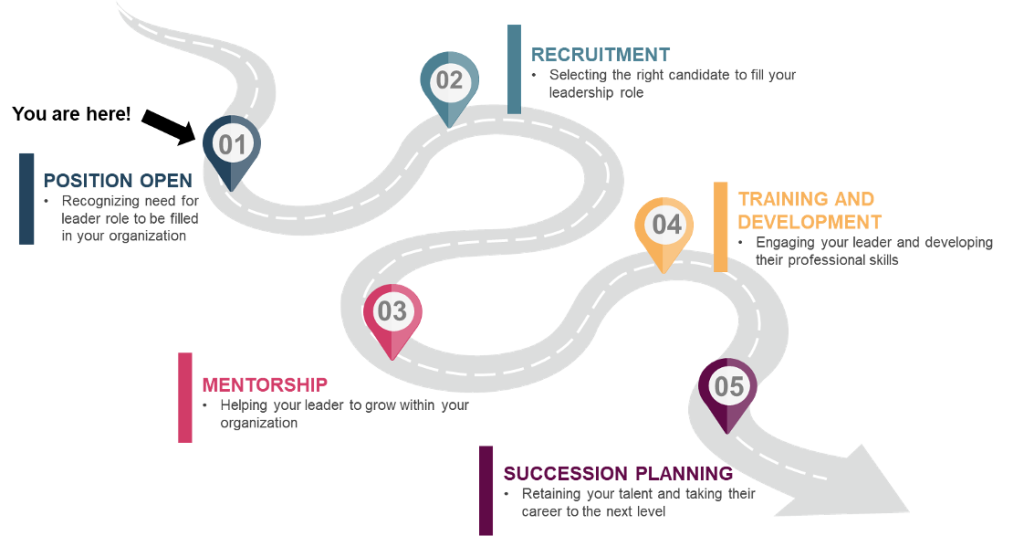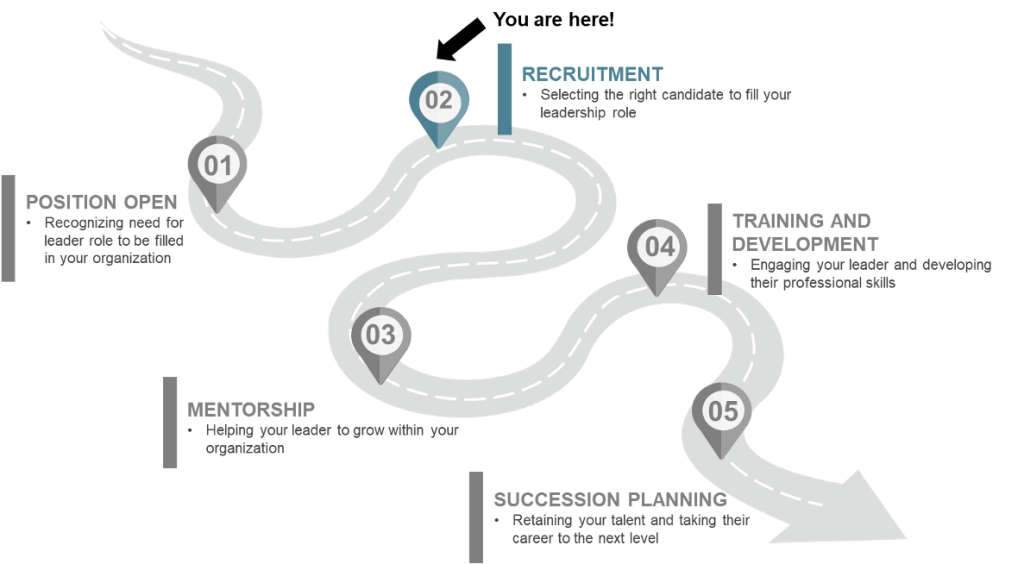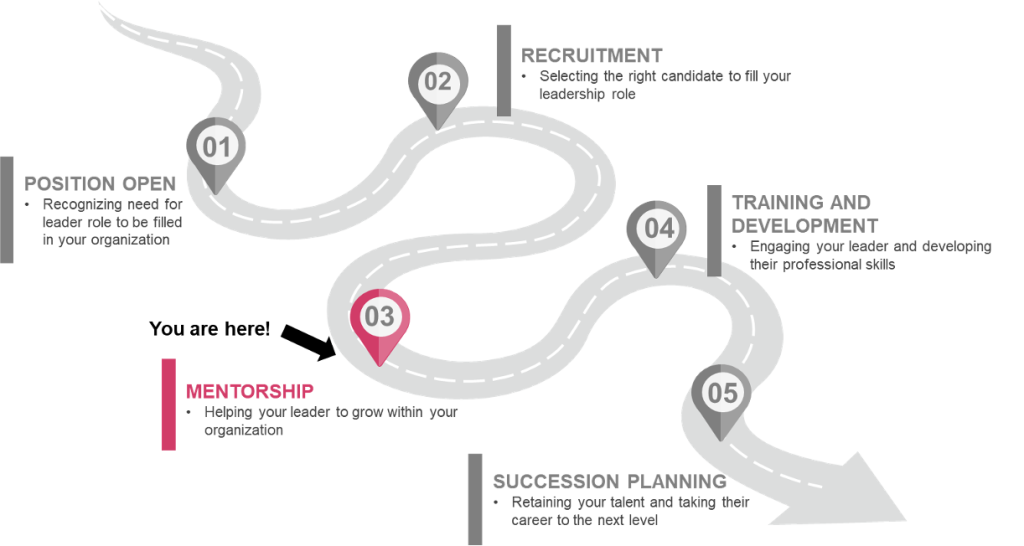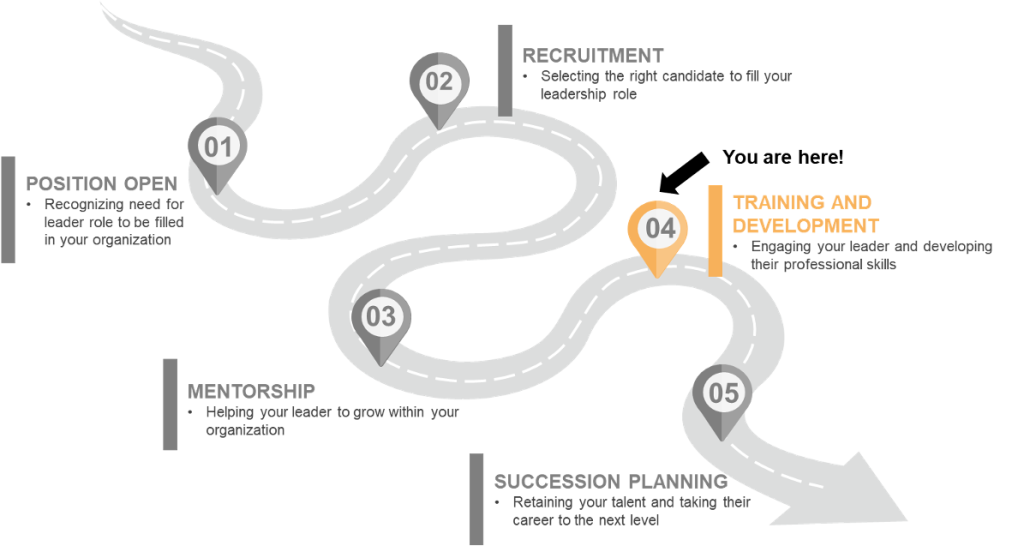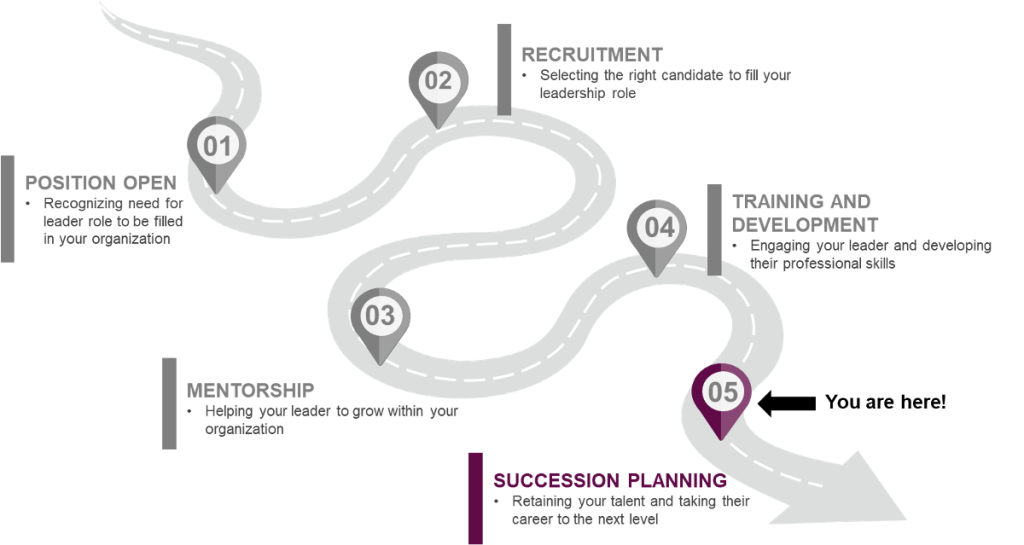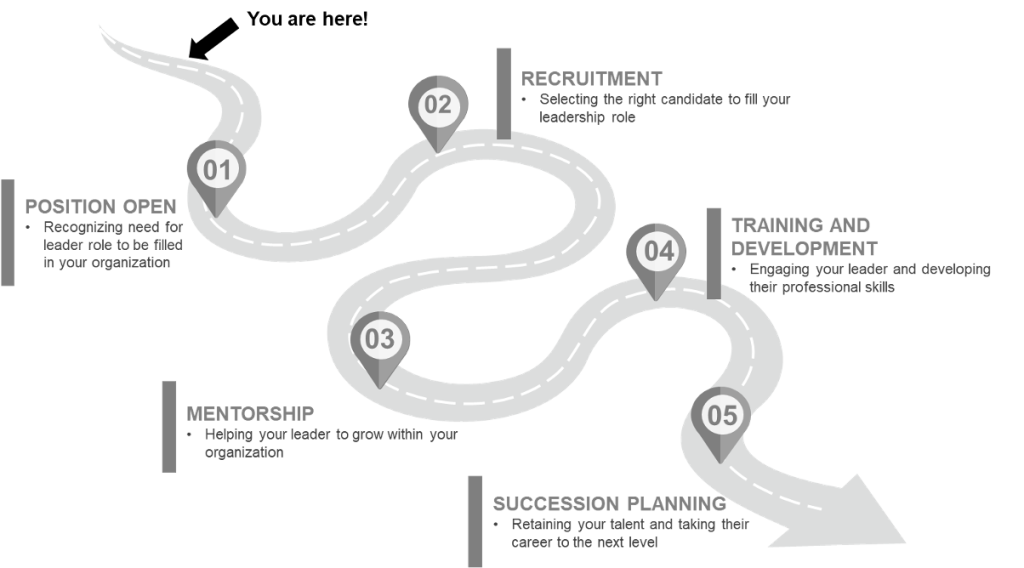Welcome to the Leader Journey!
You are at Pit Stop #1, where you have recognized a need for a leader within your organization. You have officially opened your position, but where do you go from here?
The Leader Journey symbolizes the various talent processes that your leaders and talent interact with. Each of these Pit Stops are critical to ensuring your organization develops a diverse composition of talented leaders.
Whether you are hiring new leaders or developing your internal talent into the next generation of leaders, it is important that each of your talent processes ensure equity and promote a sense of belonging.
